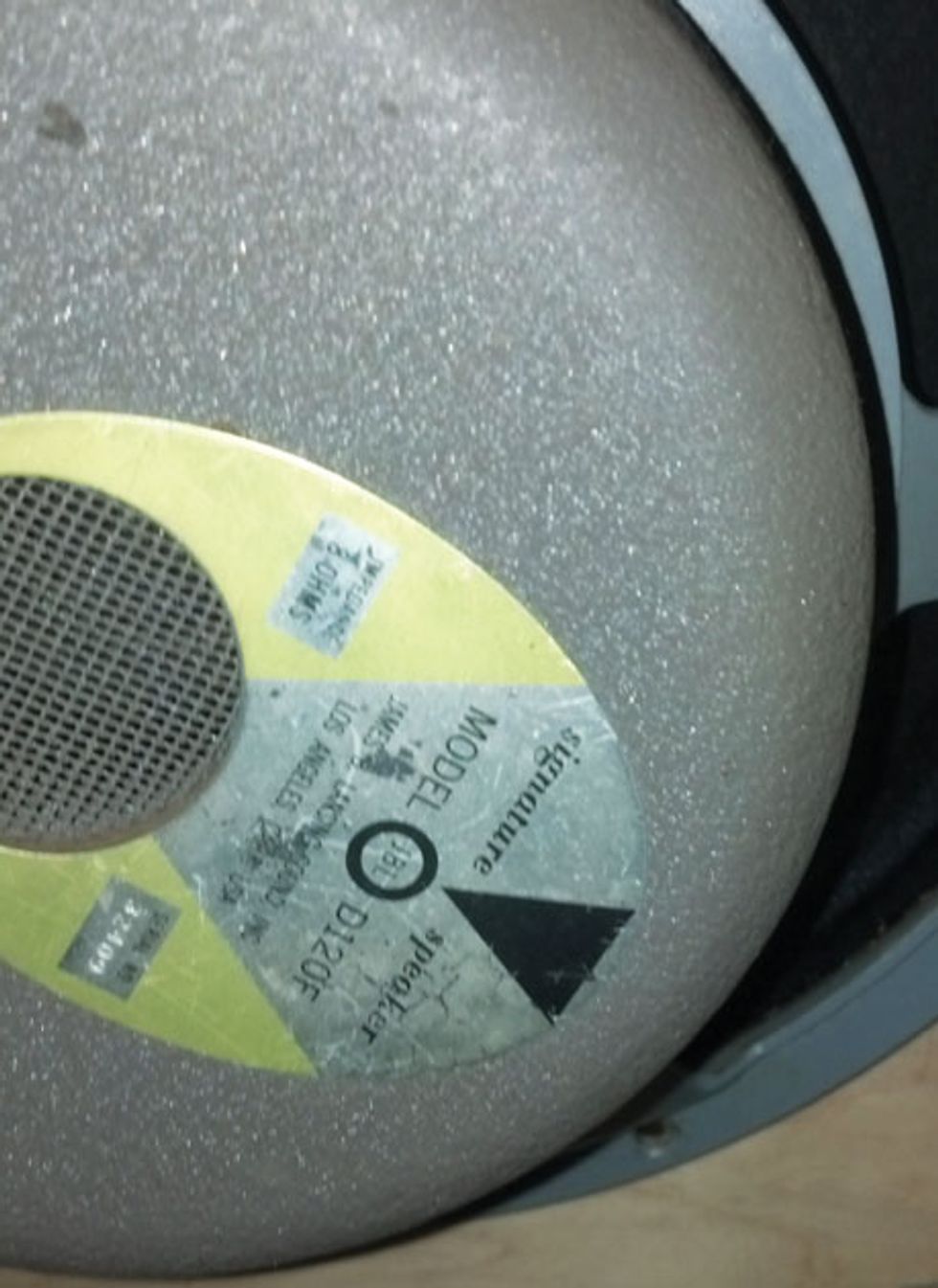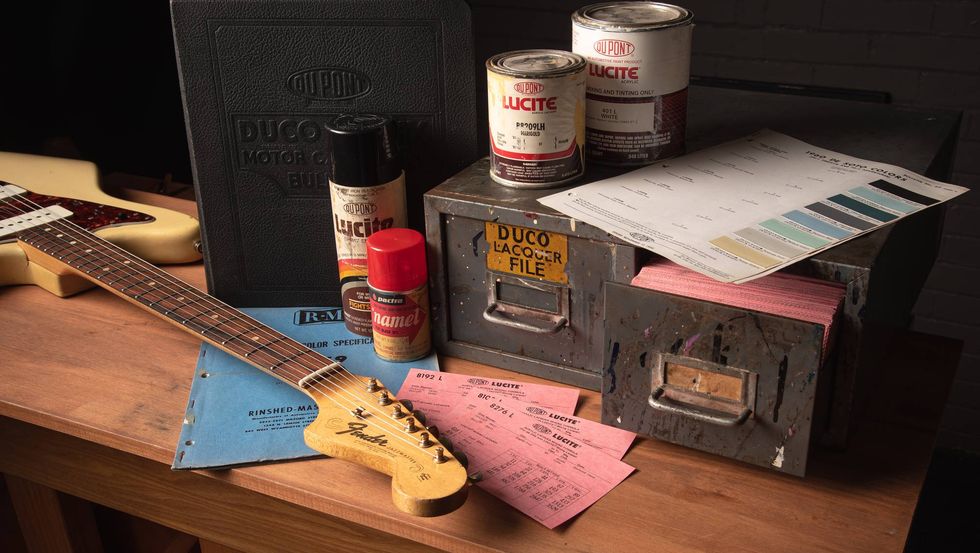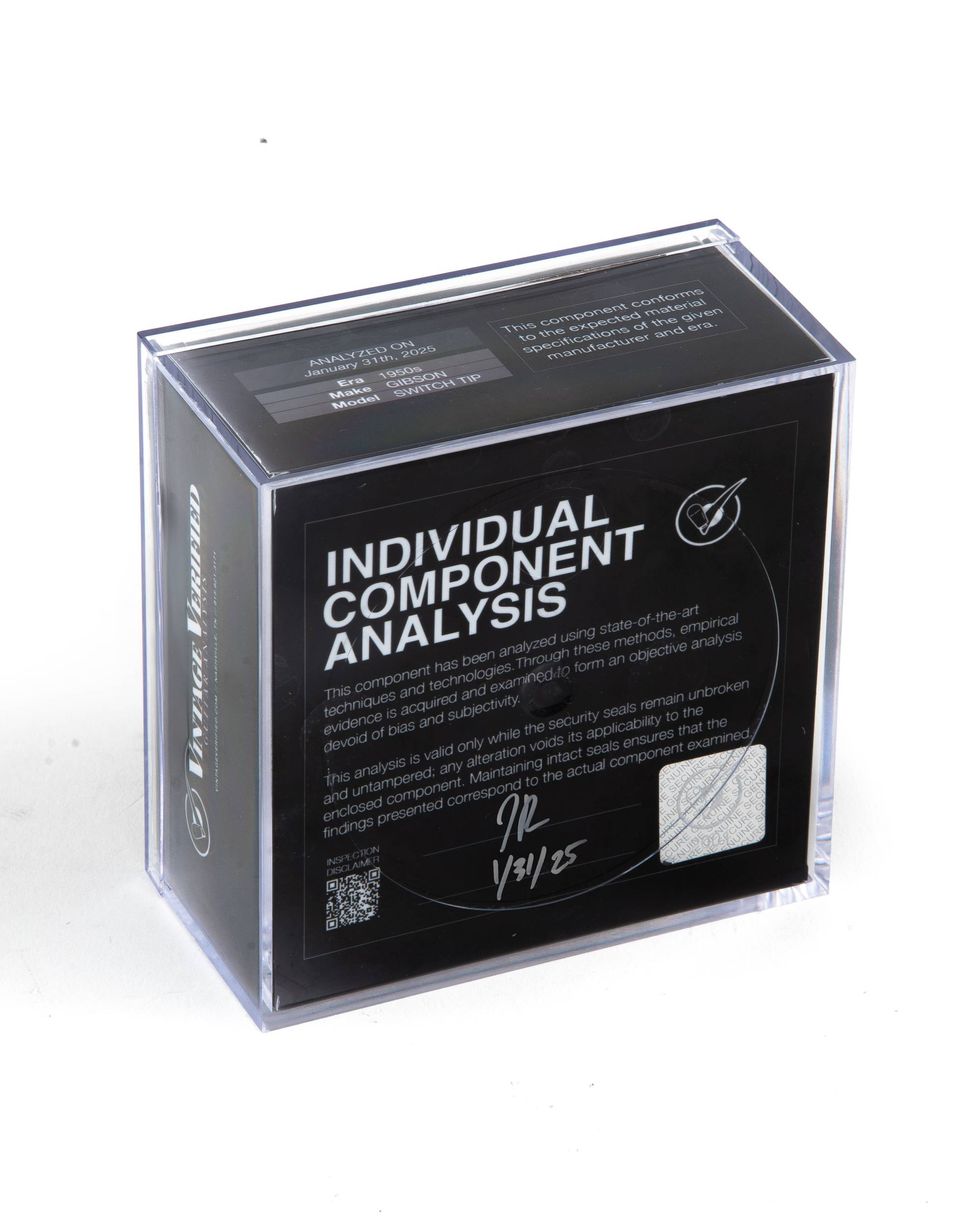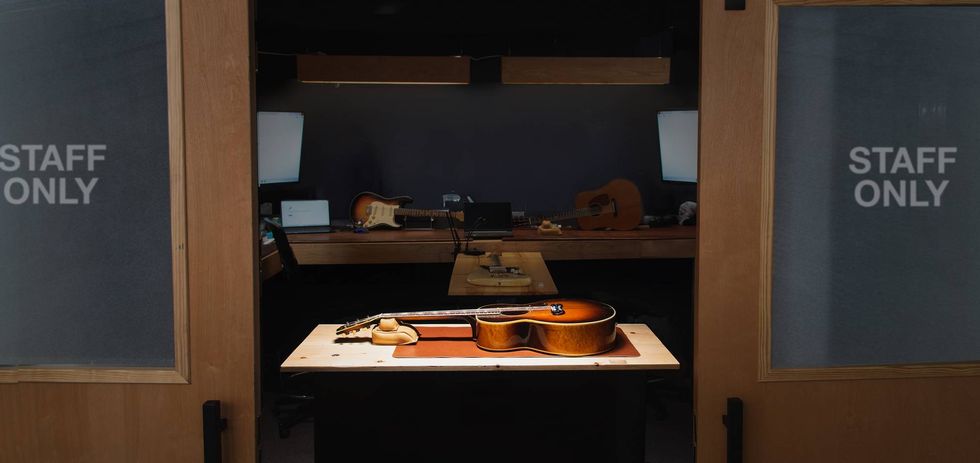Jeff,
I bought a 1970 Twin because it contains a pair of JBL D120s. I intended to pull out the JBLs and resell the amp with Jensens or something—a cheaper way to get these increasingly expensive speakers. I really love the amp, but there’s the age-old Twin issue of too much power. Is it possible to install a smaller output transformer? Would that reduce the power, as long as the ohms matched for the four 6L6s? I hear of people doing the opposite (putting bigger OTs in Princetons and Deluxe Reverbs) but not the other way around. Do you have any insight on this?
Jacob
Hi Jacob,
Ah, the ’70s Twin with JBLs! If you wanted to sound like the Dead back in the day, that was the amp to have. Big, loud, and clean. I can remember Terrible Ted with multiple Twins on top of multiple Dual Showman cabs, because … well, a man’s just gotta be heard!
It’s a bit different now, isn’t it? These days if you walk into a room with a Twin, they make you set it up outside—not to mention the JBL factor, which makes the amp even louder. But if you really need that sound, the D Series speakers are ones to have, with their 11 pounds of coveted alnico 5 magnet material. That, combined with a 4" voice coil, equals some pretty high efficiency! But therein lies the problem: You want these speakers, but the amp is too loud. Okay, rule out what would have been my first suggestion: less efficient speakers.
You mention swapping output transformers. You are correct about people doing it the other way around back in the days of the manly amp. (One famous company actually got its start turning little Princeton amps into 100-watt fire-breathers.) Power was king then, but now it makes more sense to have a larger box with fewer watts. It sounds bigger and makes it easier to push the amp into overdrive when necessary.
set it up outside.
But back to your Twin-plus-JBL rig. You touched on your first option: removing tubes. Yes, players often pull two of the output tubes in a four-output-tube amp to reduce the output power. In most amps—Twins included—you’d remove one tube from the right pair and one from the left. (It doesn’t matter which ones, as long as it’s one from each side. I prefer pulling any combination except the two outside tubes to create more breathing room between tubes for cooling.)
You can take this a step further by disconnecting one of the speakers. Since the load on the output transformer’s primary side changes when two tubes are removed, one speaker properly balances the load on the secondary side. (Though Fender transformers seem to have withstood impedance mismatches for years and fared rather well.)
There are other non-invasive options, such as power attenuation devices. There’s no shortage of these on the market nowadays. Just know your speakers won’t be contributing to any overdriven sounds you might create.
For that loud, ultra-clean JBL sound, D-series speakers like this one are the most desirable.
Another option is tube-conversion adaptors such as Yellow Jackets. These substantially reduce the amp’s output power via adaptors installed in the output tube sockets, allowing the use of smaller 6BQ5/EL84 tubes. That provides a substantial reduction in power, but the amp will lose that glassy 6L6 tone. (That’s not necessarily a bad thing—just different. And hey, with those JBLs and their extended top end, it might actually be a good thing!)
You mention the next option: replacing the output transformer. This, of course, would go along with removing two of the output tubes. If you wish to explore this option, I suggest using an output transformer designed for something like a Fender Pro Reverb, and amp with two 6L6 tubes and a 4-ohm load. There are also aftermarket transformers designed for two 6L6s with multi-impedance output taps, which would let you run both JBLs at 4 ohms, or run only one using the 8-ohm tap.
When doing this conversion, the B+ voltage rises a bit because removing the two tubes reduces the load on the power supply. As an extra safety step, I recommend removing the 470-ohm screen grid resistors and replacing them with a 2.2k resistor to lower the screen grid voltage a bit. Be sure to re-bias the amp, since this modification will certainly change the bias.
Of course, you could always replace the speakers in the Twin, sell it, buy a Pro Reverb, and install the JBLs, but that would be too easy. (Ha!) Anyway, I hope this helps you throttle back your Twin.











![Rig Rundown: John 5 [2026]](https://www.premierguitar.com/media-library/youtube.jpg?id=62681883&width=1245&height=700&quality=70&coordinates=0%2C45%2C0%2C45)








![Rig Rundown: Russian Circles’ Mike Sullivan [2025]](https://www.premierguitar.com/media-library/youtube.jpg?id=62303631&width=1245&height=700&quality=70&coordinates=0%2C0%2C0%2C0)







